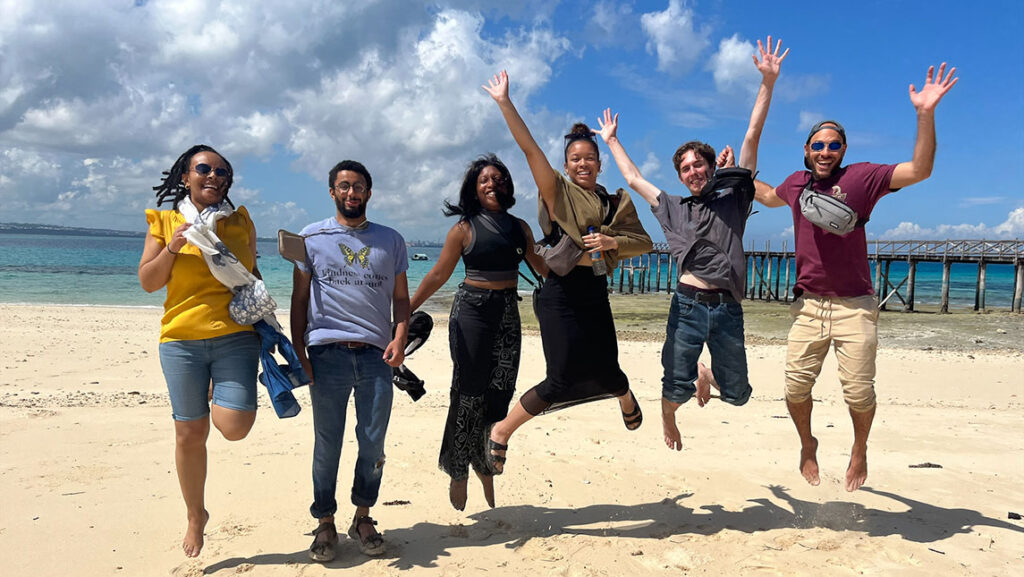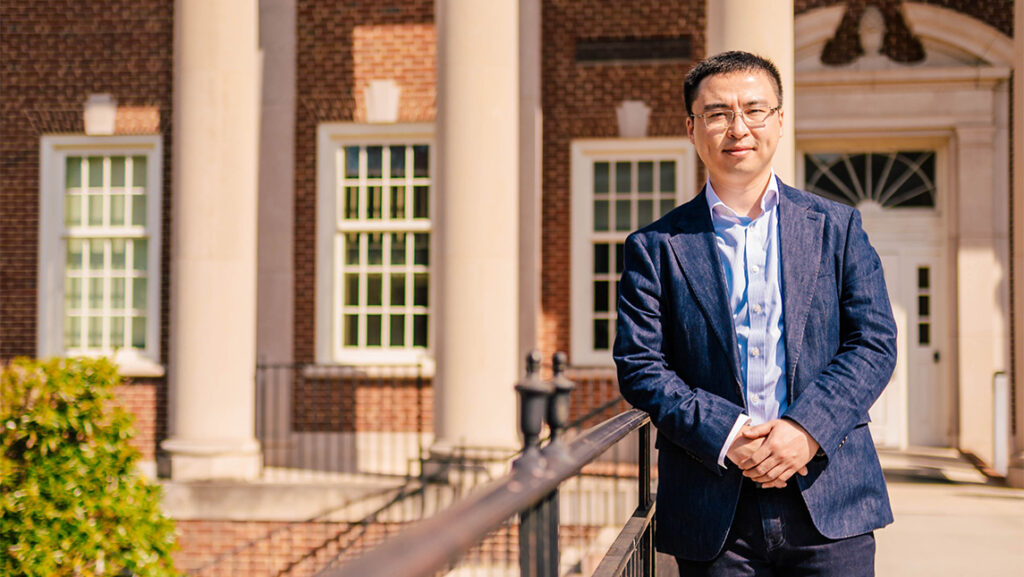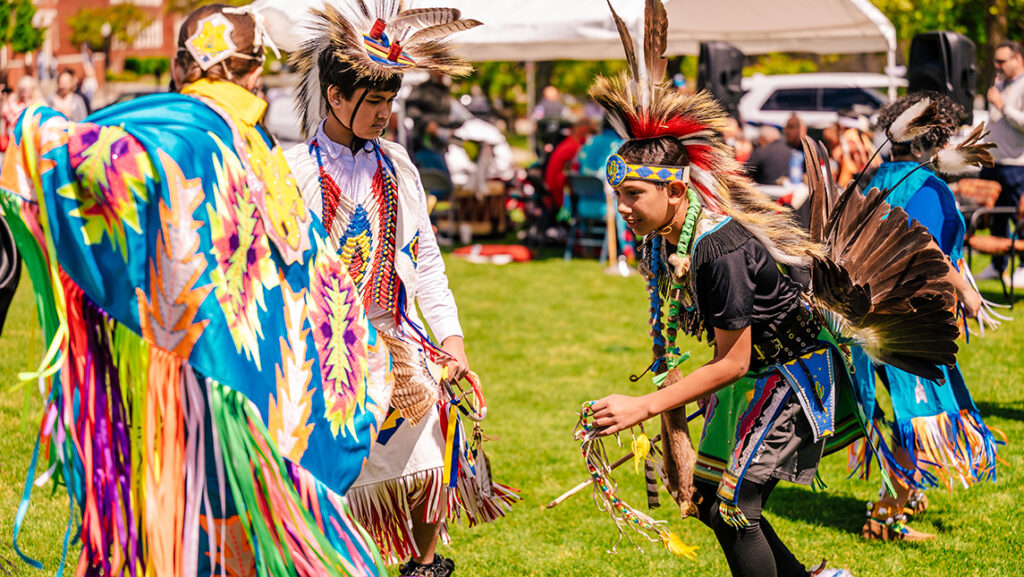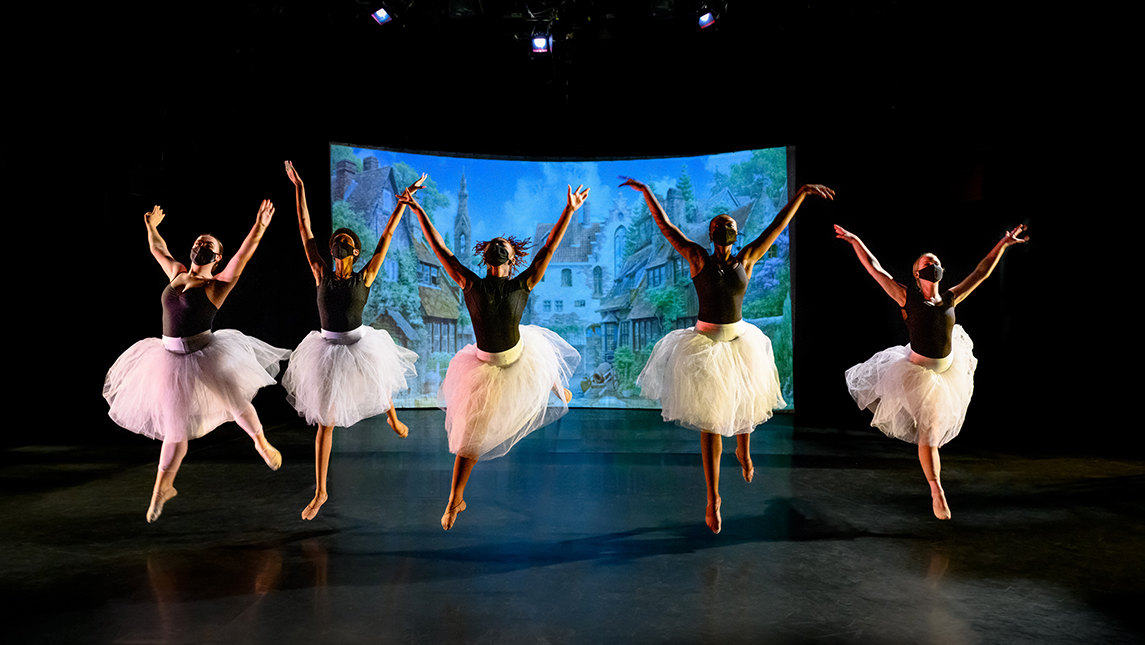
Exciting. Surreal. Empowering. Humbling.
This is how the four MFA Dance candidates described seeing their graduate thesis projects come to life on the Coleman Dance Theater stage at the UNC Greensboro School of Dance MFA Thesis Concert. After three years of research, coursework, collaboration, and pure hard work, these four women – Allison Beaty, Chelsea Hilding, Allison McCarthy, and Caitlyn Schrader – could not be more proud of the work they created, both as individuals and as a cohort.
Because while each candidate produced her own thesis, the foursome established a strong sense of community both personally and professionally, described by Schrader as a “cohort of strong, intelligent, creative women.”
“My experience has been formed by my cohort,” McCarthy says. “It was beneficial to go through this process with three unique, mature artists who are open to collaboration and conversation. It’s been so fruitful to have this artistic and social support system through these three years.”
Each dancer credits not only one another but also the UNCG faculty for her success.
“The mentorship of the faculty has been amazing,” Beaty says. “The thesis committee has been supportive of my goals and provided resources and advice in pursuit of those goals. It’s been a lovely experience.”
The candidates were all drawn to UNCG’s MFA dance program for the ability to pursue individual interests and research, so while students take some of the same core classes, especially at the beginning of their coursework, they are encouraged to develop into unique artists, educators and scholars.
Evidenced by their four very different thesis concepts and performances, that is exactly what happened. The four happily shared about their journeys through this process.
Allison Beaty: …(con)fabulate
“It’s hard to pick just one thing about dance that I love, which is why I’m here at UNCG. I can teach, perform, choreograph, and research. I love it all equally.”
Beaty says UNCG has provided her with the space for creative research, to dive deeper into things she was interested in already but didn’t have the time or resources to explore. It was during her cognitive neuroscience class – her chosen outside elective – that the concept for her thesis was born.
“I started bringing ideas we learned in class into my movement lab. The memory piece was really interesting, and I kept translating memory mechanisms into movement pieces. Memory failure can be so frustrating but also so beautiful. If we don’t forget, we can’t create new memories.”
Bringing her two main interests of science and art together, her concept focuses on the fragility of memory. She and her dancers spent time reflecting on memory error and translated that into movement, spatial design, or improvisational structures. While interpretations of memory loss are typically portrayed as sad, Beaty is intrigued by the humorous and opportunistic side and chose to showcase her belief that “we have the ability to grow if we forget.”
She describes watching the performance as extremely satisfying. “It was intimate and personal and emotional. That was surprising but wonderful. I didn’t think I was putting so much of myself into it. I feel like I had an artistic voice before, but it’s clearer now; I can articulate the work I make and want to make in future.”
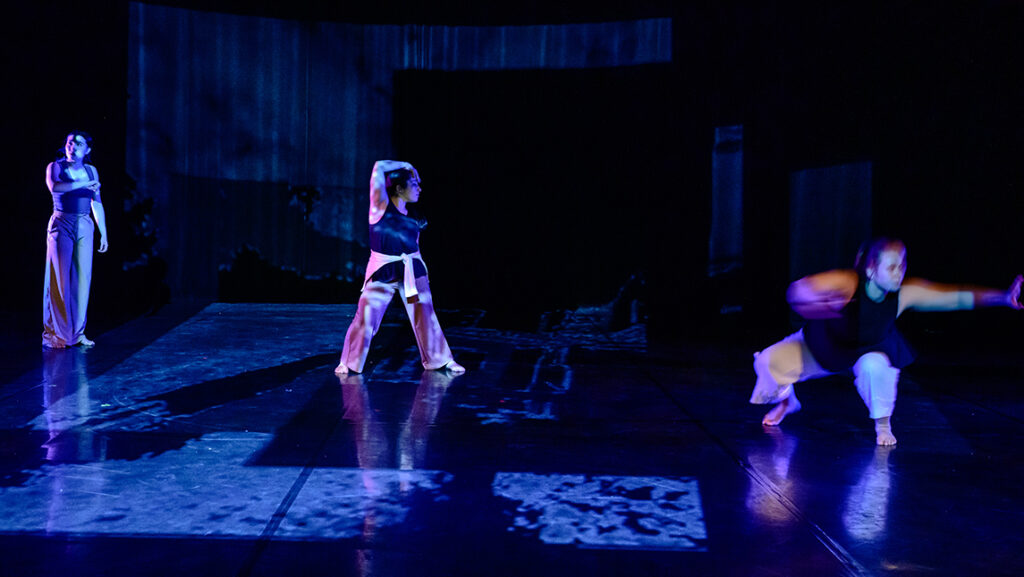
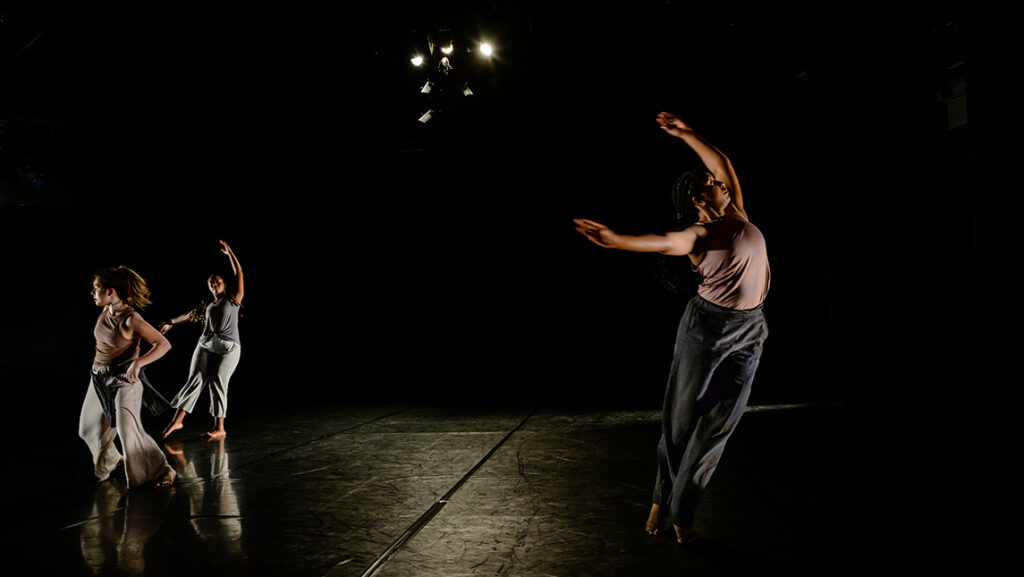
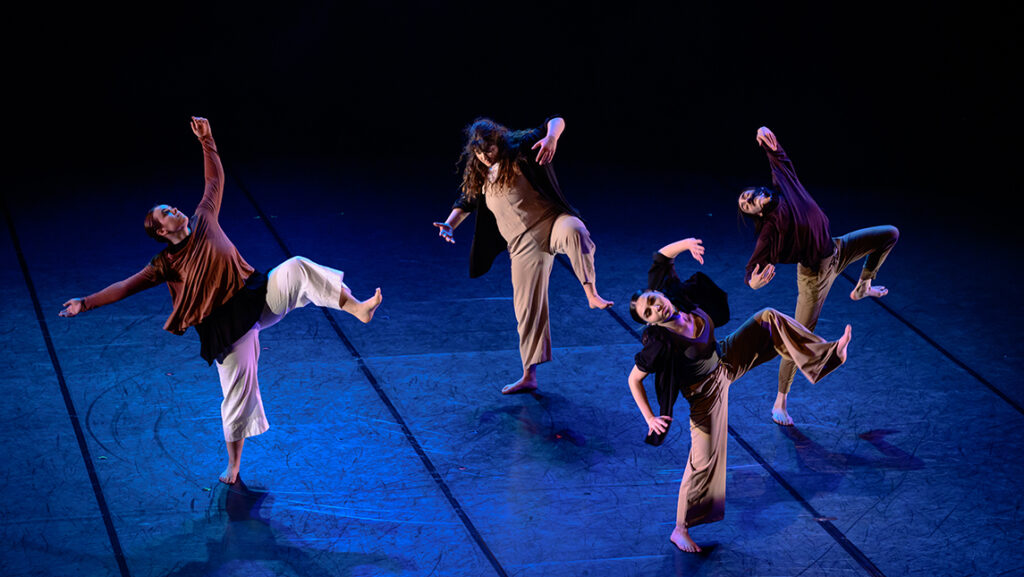
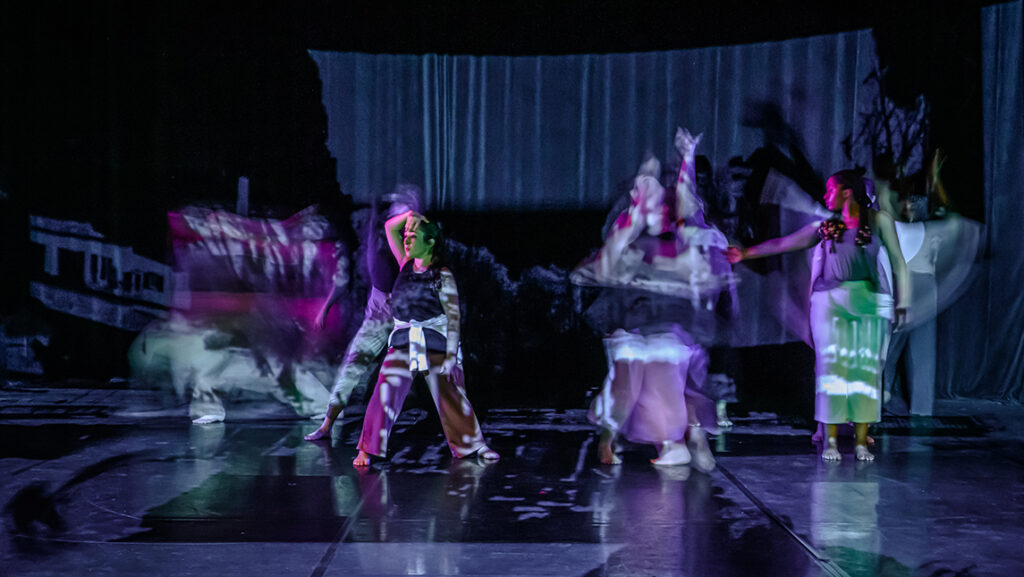
Chelsea Hilding: Ballet is Women
“I grew up dancing in conservative ballet settings and never quite fit in. I always felt like I was on an island, doing it by myself. Where are the other dancers like me? My experience inspired me as a teacher and choreographer to look at ballet and pedagogy through an ‘outsider’ lens.”
Hilding took this passion for “inclusive ballet pedagogy” and opened her own studio for adult dancers where all were welcome. She calls it “an experiment in empowering the dancer and teaching in an inclusive manner, serving as first-hand research on what happens when you don’t prescribe gender to a body or push the ‘ideal body.’” This need to fight for inclusivity is what pushed her to go to graduate school.
For her thesis, Hilding says she didn’t want to just create a dance.
“This is an opportunity in a safe space to be messy, an opportunity to have an audience of dancers, so I wanted to say something and give other dancers a chance to speak and be heard. I thought, What could I do or say that would have affected my 15 year old self? What would I have wanted to see that would have changed my perspective?”
Hilding’s performance is an exploration through the past, present, and theoretical inclusive future of dance. She and eight other dancers inserted themselves into dance history and explored how they would create a ballet environment that was different from the typical space.
“Ballet is not a fixed form; it’s always been evolving and will continue to evolve, so we can make inclusive change. [My thesis] is a celebration of different bodies and different backgrounds in ballet.”
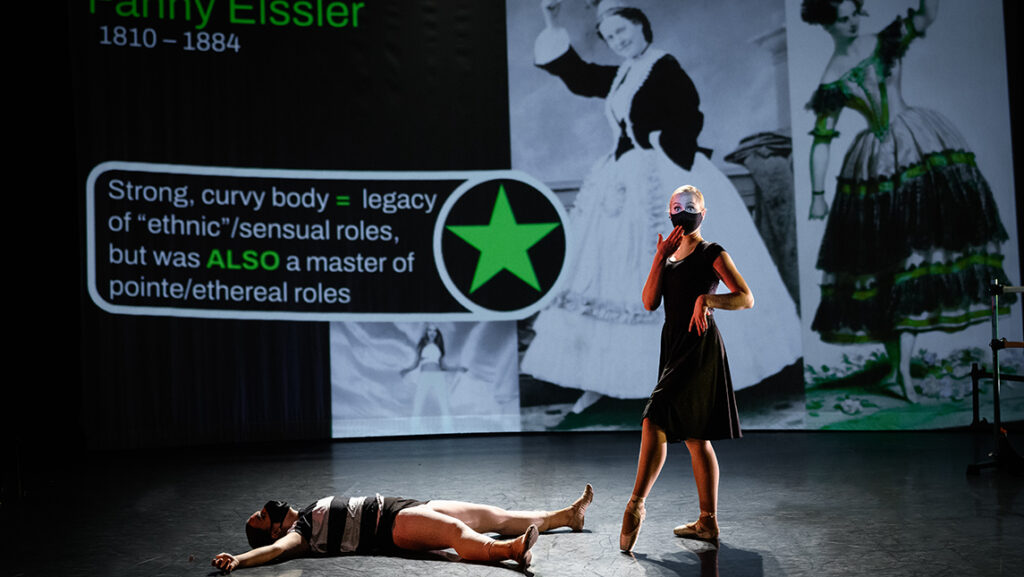
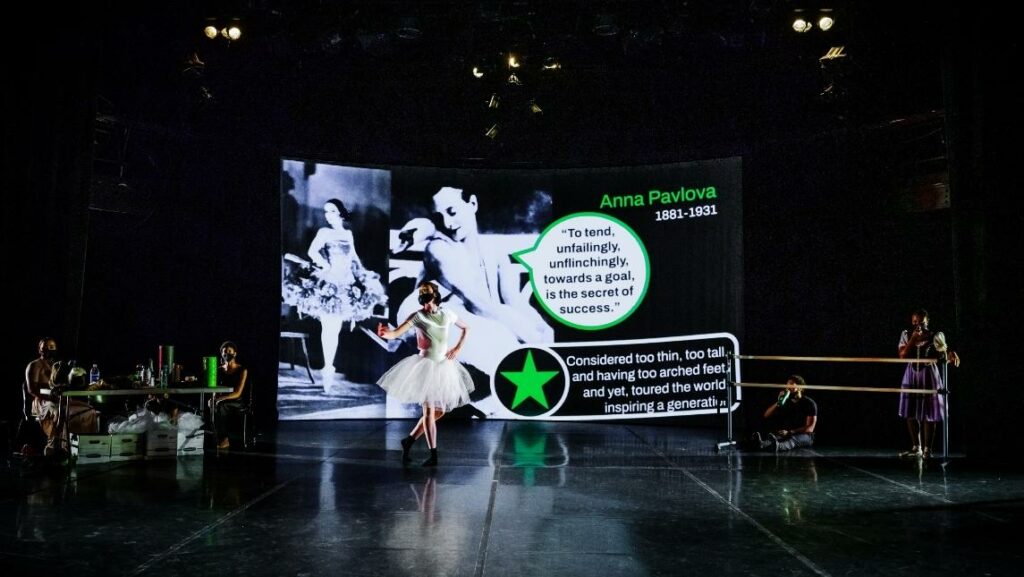
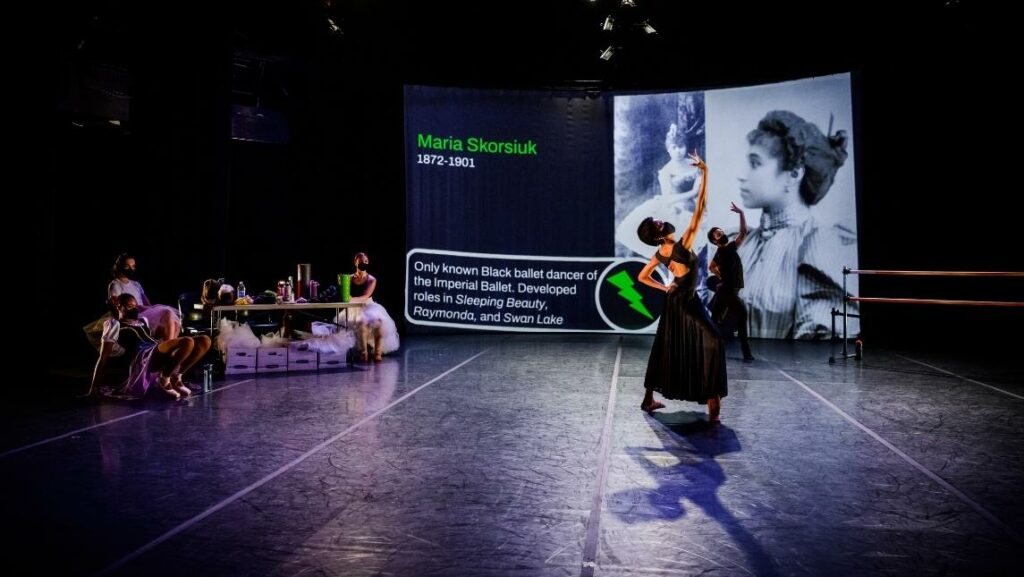
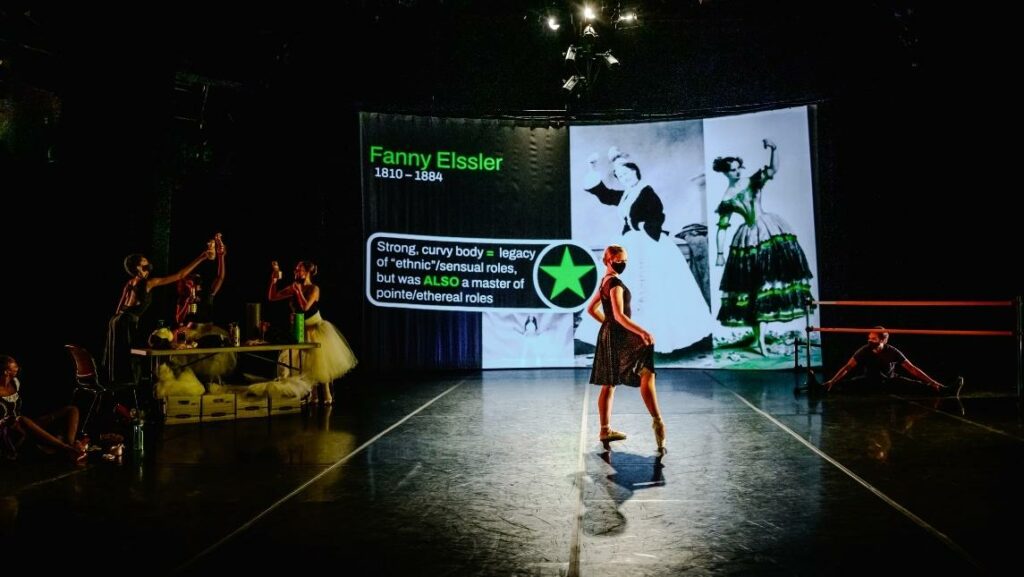
Allison McCarthy: Released
McCarthy describes herself as an artist and an activist. Passionate about creating art for social change, her thesis is a physical exploration of experiences of previously incarcerated women in North Carolina. Most of her research involved collecting oral histories of women in the state who are returning citizens, learning about their challenges and successes. Through dance and some theatrical work, she and her dancers created a piece that reflected those stories.
“It was a collaborative process with my dancers, many of whom were first-generation students or who had experienced immigration and/or intersectionality in a personal way. We talked a lot about the system and what we needed to showcase. The dancers were a big part of selecting which moments were used on stage.”
McCarthy says she’s aware of other artists who serve as activists, what voices they amplify and what stories they tell.
“I’m seeing a lot of things that I am empathetic toward are already being presented in art. You don’t often hear about people who did commit a crime, served their time, and are returning to society because there isn’t a lot of empathy there. I felt like it is a community that is overlooked, and I wanted to add this story to the conversation.”
After the performance, many people shared with McCarthy how they related to or had even experienced issues related to marginalization. “It was exciting for me to hear how it resonated. I am grateful that I could carry that emotional impact into a space to be shared with a bigger audience.”
McCarthy is thankful for Benevolence Farm’s beneficial role in her research and encourages others to support this local organization.
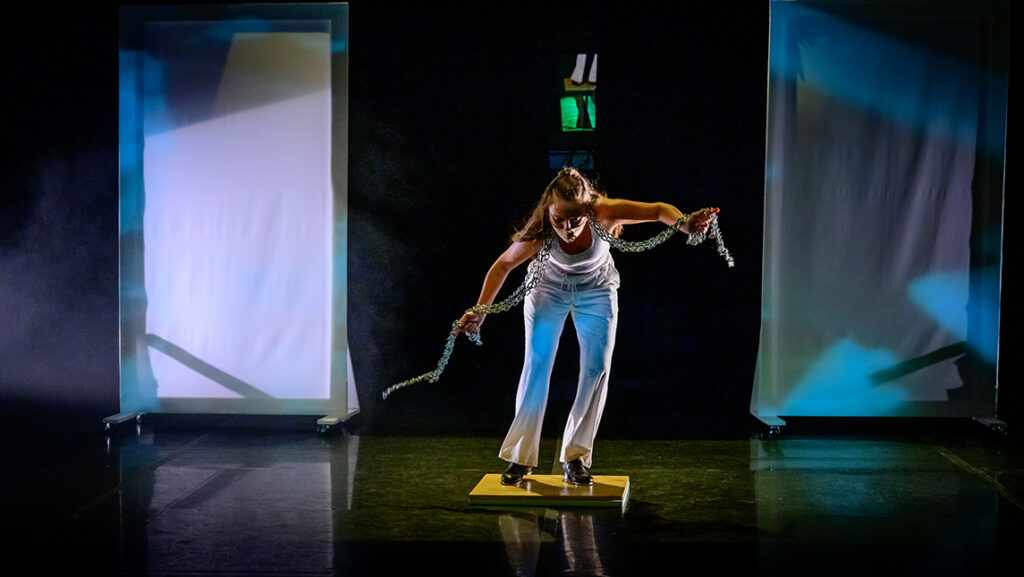
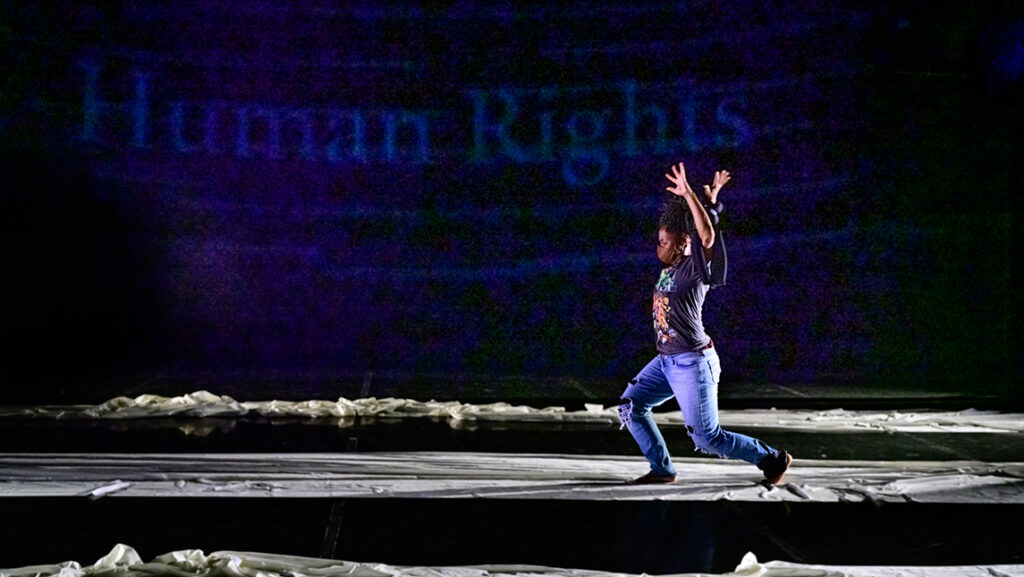
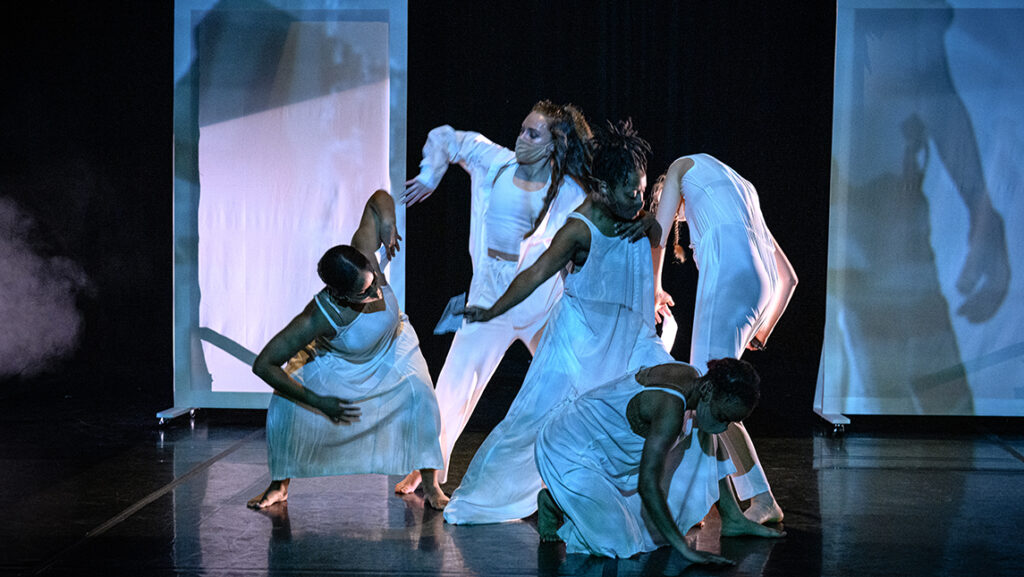
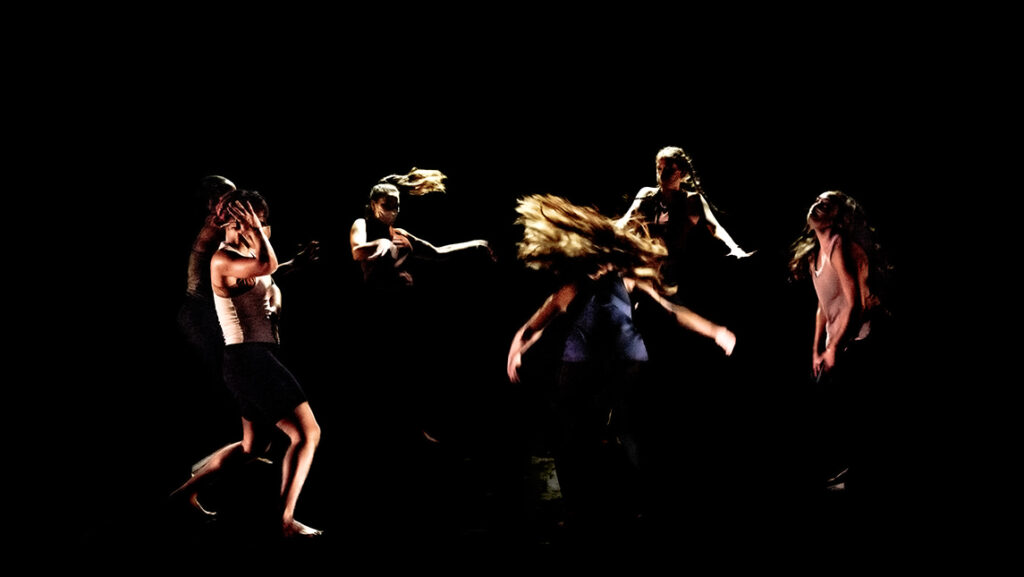
Caitlyn Schrader: of liminal space
Dance has been a big part of Schrader’s identity for most of her life. As both a performer and choreographer, she loves to share her passion for dance.
“I hope to continue to find platforms to connect with other artists and find ways to bridge and build relationships between institution and society.”
One such way Schrader aims to accomplish this is by bringing her interest in the audience’s viewing experience – how they encounter and engage with dance – into her work as a career artist. She considers each dance performance to be a shared human experience.
Her thesis is a conceptual approach to her interests, not necessarily “about” something in particular.
“For this work, I was drawn to this idea that the way one orients or disorients themselves to something is the way they then come to understand that particular thing.”
Developing movement material as she was working with dancers and involving the audience even before the performance began, Schrader says the dance work was evolving and being created in the moment.
“I’m more interested in crafting experiences than presenting polished, finished products, even though there is quite a bit of structure that went into designing this dance. It’s an approach that I like to call ‘chaos in structure’ – there are parameters and set structures, but there is also possibility for chance and the unknown. It’s an authentic and collaborative experience with whomever is in the room with me.”
Schrader considers her time at UNCG as a season of growth, community, and possibility.
“I came to grad school for deeper knowledge, understanding, connection, and sense of self as an educator, maker, and performer. I feel like I’m transitioning with exactly that.”
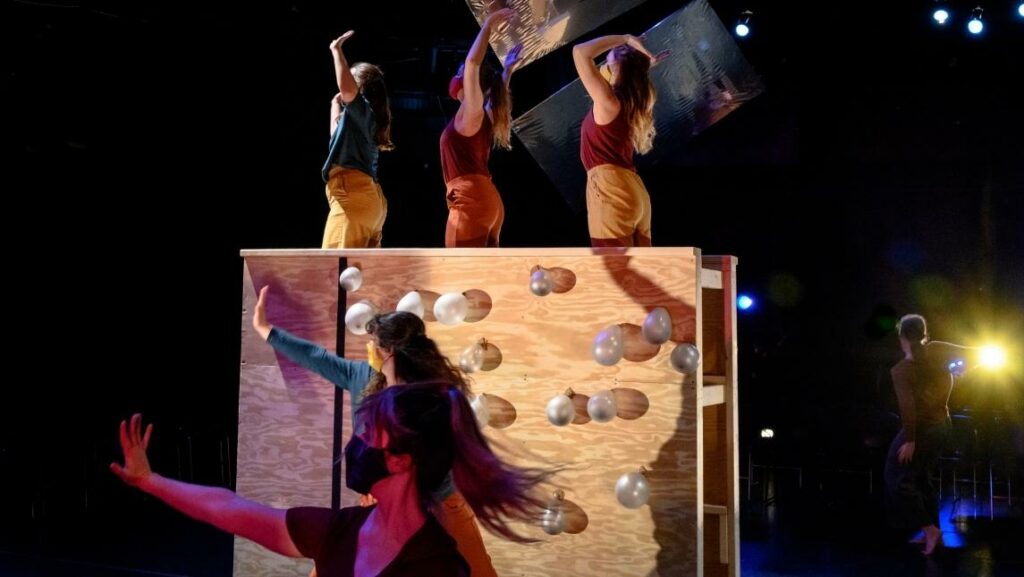
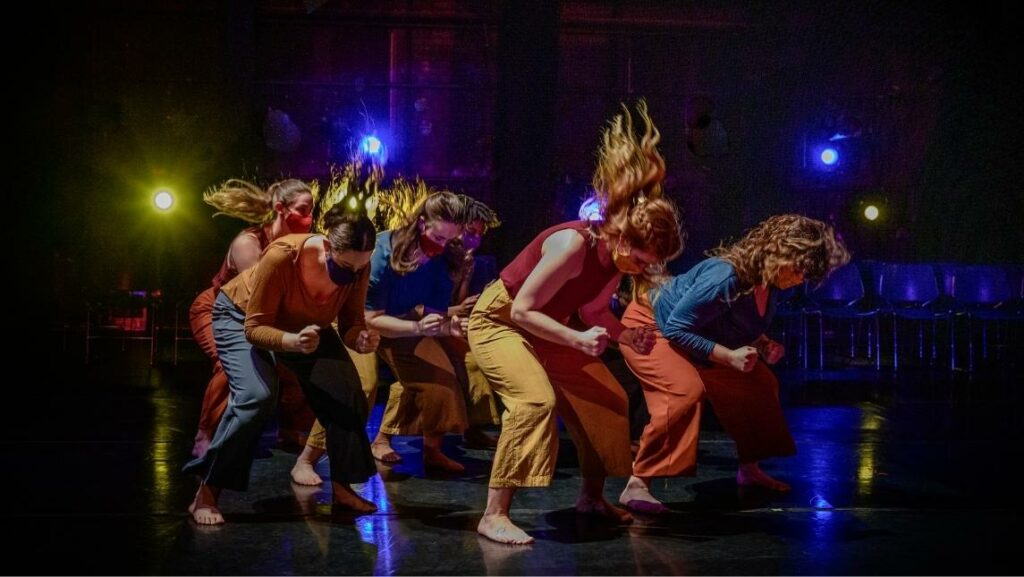
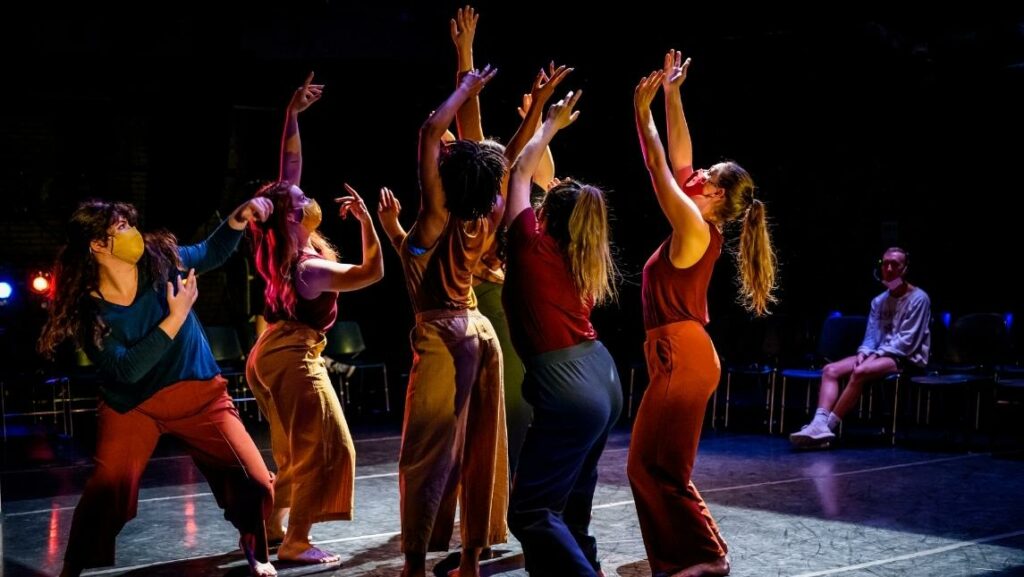
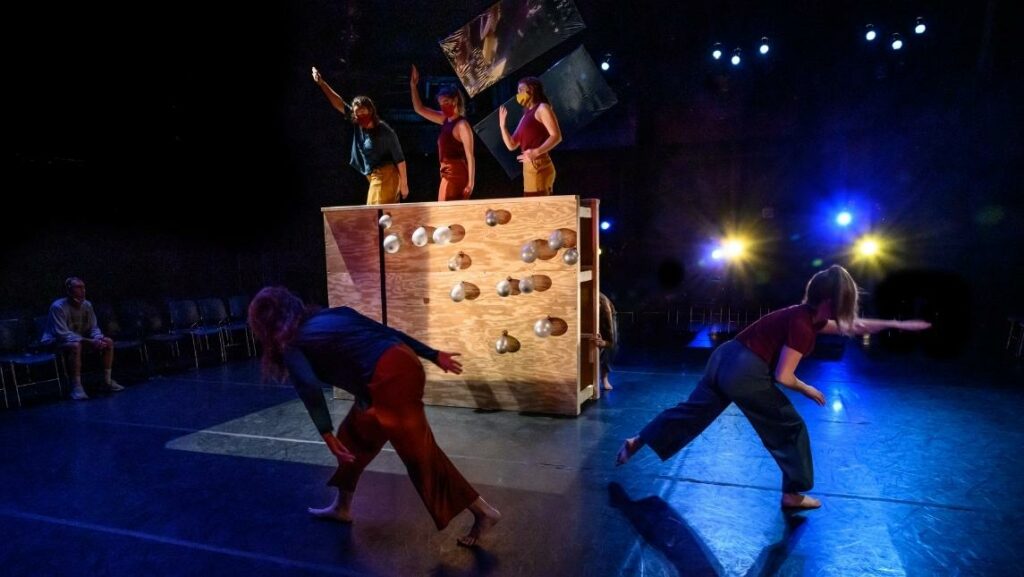
Story by AMBCopy, LLC
Photography by Martin W. Kane, University Communications
